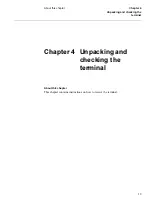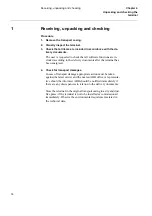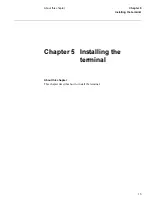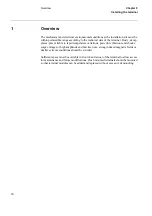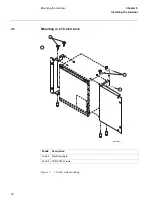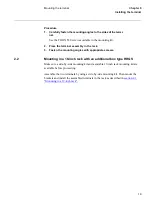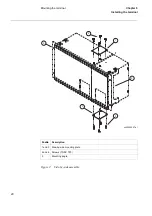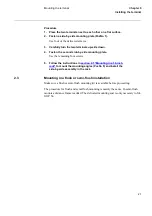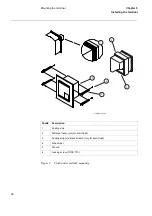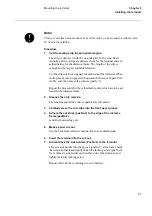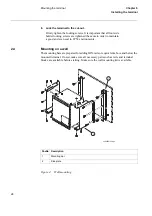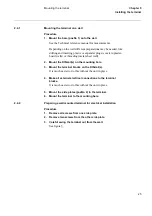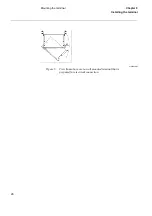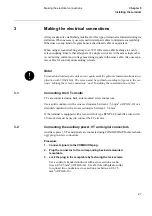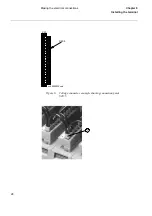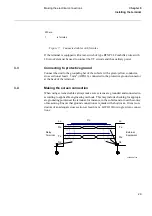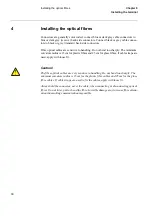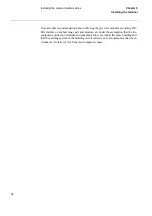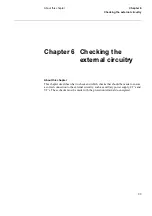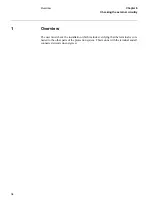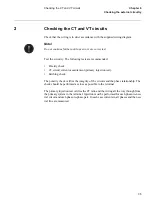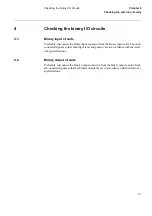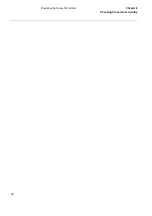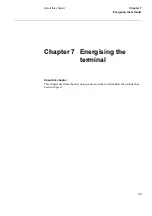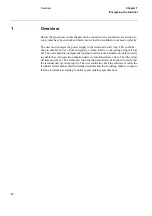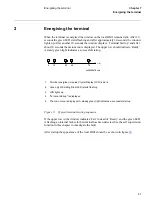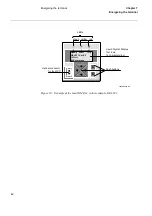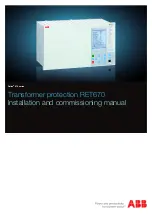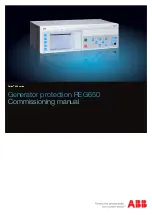
27
Making the electrical connections
&KDSWHU
,QVWDOOLQJWKHWHUPLQDO
0DNLQJWKHHOHFWULFDOFRQQHFWLRQV
Always make sure established guidelines for this type of terminal is followed during in-
stallation. When necessary use screened twisted-pair cables to minimize susceptibility.
Otherwise use any kind of regular nonscreened tinned cable or equivalent.
When using screened cabling always use 360° full screen cable bushings to ensure
screen coupling. Ensure that all signals of a single circuit are in the same single cable.
Avoid mixing current and voltage measuring signals in the same cable. Also use sepa-
rate cables for control and measuring circuits.
&RQQHFWLQJWKH&7FLUFXLWV
CTs are connected using back-side mounted screw connectors.
Use a solid conductor with a cross section area between 2.5-6 mm
2
(AWG14-10) or a
stranded conductor with a cross section area between 2.5-4 mm
2
.
If the terminal is equipped with a test-switch of type RTXP 24 Combiflex wires with
20 A sockets must be used to connect the CT circuits.
&RQQHFWLQJWKHDX[LOLDU\SRZHU97DQGVLJQDOFRQQHFWRUV
Auxiliary power, VTs and signals are connected using COMBICON (Phoenix technol-
ogy) plug-in screw connectors.
3URFHGXUH
&RQQHFWVLJQDOVWRWKH&20%,&21SOXJ
3OXJWKHFRQQHFWRUWRWKHFRUUHVSRQGLQJEDFNVLGHPRXQWHG
UHFHSWDEOH
/RFNWKHSOXJWRWKHUHFHSWDEOHE\IDVWHQLQJWKHORFNVFUHZV
Use a solid or stranded conductor with a cross section area be-
tween 0.5-2.5 mm
2
(AWG20-14). Use a ferrule with plastic collar
to connect two conductors, cross section area between 0.5-1.5
mm
2
(AWG20-16).
1RWH
6FUHHQHGDQGWZLVWHGSDLUFDEOHVDUHDUHTXLUHPHQWIRUJDOYDQLFFRPPXQLFDWLRQVLQDS
SOLFDWLRQZLWKNELWV7KHVFUHHQPXVWEHHDUWKHGDFFRUGLQJWRILJXUHVLQWKHVHF
WLRQV³0DNLQJWKHVFUHHQFRQQHFWLRQ´DQG³,QVWDOOLQJWKHFRPPXQLFDWLRQFDEOHV´
Summary of Contents for REL 531
Page 16: ...10 Note signs KDSWHU 6DIHW LQIRUPDWLRQ ...
Page 44: ...38 Checking the binary I O circuits KDSWHU KHFNLQJ WKH H WHUQDO FLUFXLWU ...
Page 52: ...46 Checking the self supervision signals KDSWHU QHUJLVLQJ WKH WHUPLQDO ...
Page 140: ...134 Testing the interaction of the distance protection KDSWHU 7HVWLQJ WKH SURWHFWLRQ V VWHP ...

